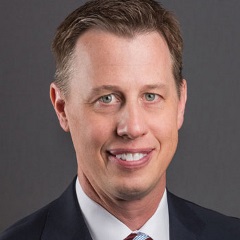Creating Consistency and Sustainability
 What do you think when you hear about patients who question the care they receive? Maybe you think, “They just don’t understand because they’re not clinicians.” Or, “Hey! Not everything we do for patients is obvious.” It’s true; sometimes patient care is subtle, and what we’re doing isn’t always evident to the patient. But that’s beside the point.
What do you think when you hear about patients who question the care they receive? Maybe you think, “They just don’t understand because they’re not clinicians.” Or, “Hey! Not everything we do for patients is obvious.” It’s true; sometimes patient care is subtle, and what we’re doing isn’t always evident to the patient. But that’s beside the point.
What patients think and feel about their experiences with us influences their perception of the quality of the care they receive. Compassion and excellence are connected when we say, “Every patient, every time.” When we say that, it also means that we want consistency in how we treat our patients. As physicians, one way we can create consistency and, in turn, sustain results is by ensuring that we engage with the tools and techniques we have established.
One simple tool we use at Premier Health is AIDET. It helps us talk about the Why, What, and How of the patient encounter.
We all know what AIDET stands for, but have we really leaned into its significance?
A – Acknowledge – Read the room. Make eye contact with everyone in the room. Find out their relationship to the patient. Look for other clues to connect on. A football jersey to comment on, a military veteran cap on someone you can thank for their service.
I – Introduce – During the introduction, there may be an opportunity to manage up yourself (title, years of experience, commitment to giving them the best care). Of course, this step can be skipped during recurrent encounters, but don’t assume the patient remembers your name after one shift.
D – Duration – How long will we be together? How long will I be performing a task that might be routine to me/how long might they have to wait? Remember, if the time is long, check in periodically if possible to reassure that you haven’t forgotten they are waiting.
E – Explanation – This is the cornerstone. Remember the Ss: sit, simple, slow. Sitting is not always possible, but when you can, it is a game changer. Simple – use words that feel a bit more basic than normal. Sometimes the level of simplicity feels a bit awkward. Trust me, it works. Slow down. We are busy and tend to talk a bit faster than most people who are sick or in stress can comprehend. During the explanation, we build trust. And when our patients trust us, they feel safe, and their families can have peace of mind.
T – Thanks – The bookend to Acknowledge, and a way to signal that the encounter is over and show respect to the other person. Thank everyone in the room if they were present for the encounter.
Without an explanation of what caregivers are doing and why, patients and family members can be left concerned and fearful that no care has been given.
Here’s an example of a well-executed AIDET: “Good morning, Mr. Smith. I’m Matt from Fidelity, and I will be in your home for about half an hour today. Most of that time I will be observing your progress since your procedure and comparing what I see to the notes in our records. Much of this will occur through speaking with you, observing how you move, and answering any questions you might have. Our goal today is to confirm that your vitals are strong, and that the care we have been providing you is having the desired impact on your recovery. What questions do you have before we begin?”
Our friend Dr. Belcastro likes to say, “If the mountain climber doesn’t anchor the piton (spike) well, the result may not be good. If we skimp on AIDET, the results won’t be consistent.”
When we explain what we are doing, it shows care for the patient. That is why we use AIDET. Asking our physicians to use this tool in every encounter isn’t because we want to script you; it’s because we want our patients to hear and feel how much we care for them. We also want them to feel like they are participants in their own care. At the end of the day, we know they are in excellent hands at Premier Health; we just need to use the tools we have to help them feel and believe they are in excellent hands when they choose Premier Health.
As Dr. Belcastro says, “Tools (like AIDET) are only tools. A mountain climber consistently scales mountains because he has a passion, but he/she needs tools to consistently succeed. While we want our patients to always feel that we care, without consistent use of tools, our patients will not always experience what our hearts want. This mountain of consistent compassion requires that we consistently use tools to succeed.”
Dr. Belcastro continues, “Our hearts must desire the change. The tools help us get there. Common sense does not get us there because we become victims of fatigue or a busy day. The tool helps us remain disciplined in our approach, but again, our hearts have to be in it.”
Back to the October 2018 issue of Premier Pulse

